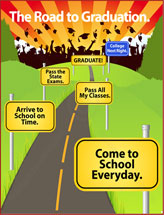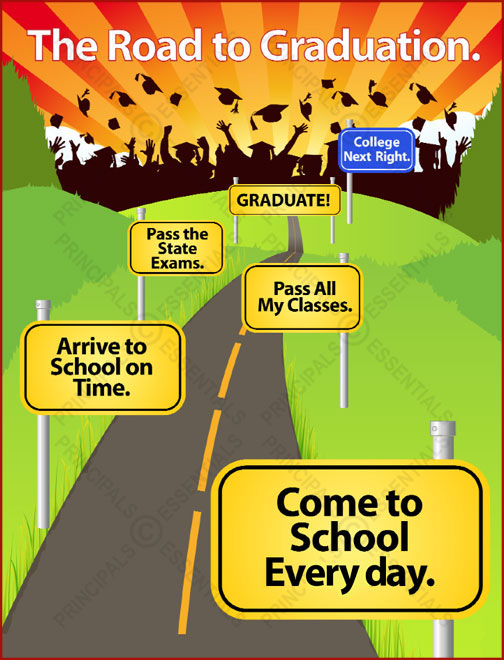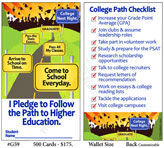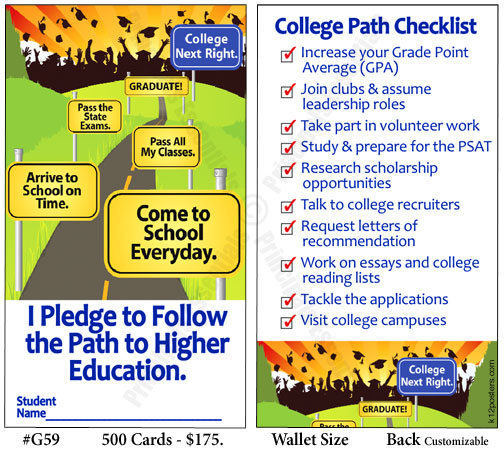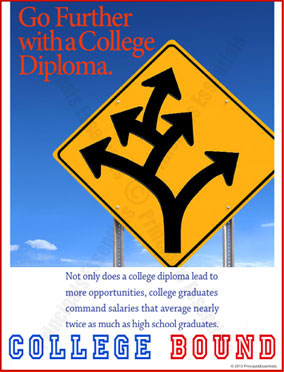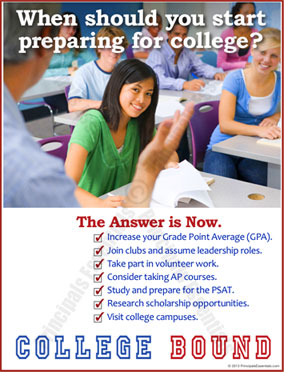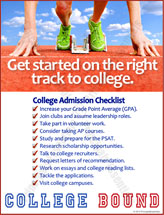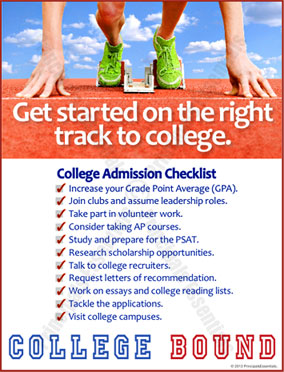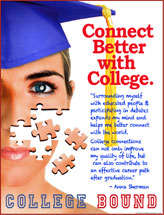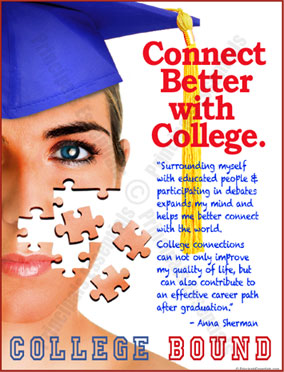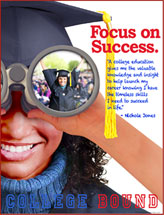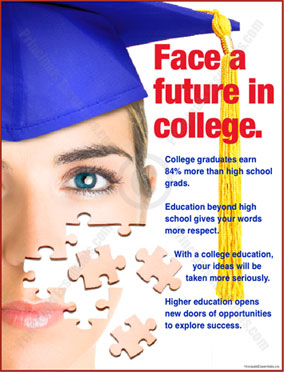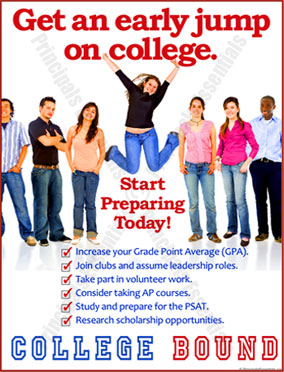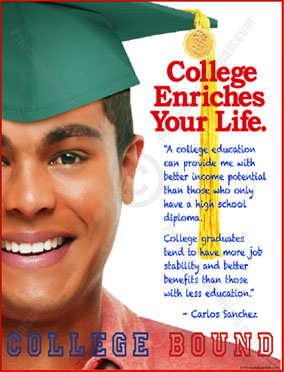Item #G41
Come to School Every day.
Arrive to school on Time.
Pass All Classes.
Pass the State Exams.
Graduate!
College Next Right.
Available in Spanish
Item #G56
24"x 75"- $125.
36"x 112"- $225.
42"x 132"- $325.
Click image to enlarge
• Increase your Grade Point Average.
• Join clubs & assume leadership roles.
• Take part in volunteer work.
• Consider taking AP courses.
• Study and prepare for the PSAT.
• Research scholarship opportunities.
• Talk to college recruiters.
• Request letters of recommendation.
• Work on essays & reading lists
• Tackle the applications.
• Visit college campuses.
Item #G48
"Surrounding myself with educated people & participating in debates expands my mind and helps me better connect with the world. College connections can not only improve my quality of life, but can also contribute to an effective career path after graduation."- Anna Sherman
Item #G43
See closeup
1. Best Life Experiences.
2. Have a Better Career.
3. Learn New Stuff.
College Readiness Item #G42
College graduates earn 84% more than high school graduates.
Education beyond high school gives your words more respect.
With a college education, your ideas will be taken more seriously.
Higher education opens new doors of opportunities to explore success.
Learning from Best-Practice
The Educational Policy Improvement Center, with support from the Bill and Melinda Gates Foundation, undertook an in-depth study of 38 high schools to find out how these schools prepared their students for college. From these findings, they developed a comprehensive set of principles that schools can follow if they wish to increase the proportion of students who are ready for postsecondary education.
Principle 1: Create and Maintain a College-Going Culture
Schools with a college-going culture project the pervasive, schoolwide belief that all students can succeed in postsecondary education. These schools send the message that all students should be focusing on college as their goal. The question for students is not whether to attend college, but how to prepare for college and how to make the transition successful.
Many schools automatically enrolled students in a program of study designed to prepare them for college unless their parents specifically opted them out of that schedule. Schools posted college acceptance letters prominently so that all students were aware of their peers' success. Award ceremonies focused on students' academic accomplishments and recognized students who had been accepted to college. A few schools even required all students to apply to at least one postsecondary institution.
Principle 2: Align the Core Academic Program with College Readiness Standards
These schools went beyond alignment with state standards, designing their curriculum to prepare students for college readiness generally and for advanced placement courses specifically. They strove to align course expectations, assignments, goals, and activities vertically across grades 9–12, using a set of college readiness standards as the reference point. Smaller schools, newly constituted schools, and charter schools had more success than large comprehensive high schools in achieving full alignment, but even the large schools could demonstrate areas where alignment had been achieved.
An additional strategy was to require all students at a given grade level in a given subject to complete a common performance task. This activity enabled the school to calibrate expectations across courses. Teachers also met to read student work and compare their expectations for their students. This strategy is particularly important in schools with diverse student populations, which may be in danger of establishing different expectations for different groups of students.
Principle 3: Teach Key Self-Management Skills
The study encountered numerous strategies and programs designed to help students improve their study skills; collect, organize, and retain factual information; take better notes; manage their time more effectively and efficiently; work in teams; and reflect on the quality of their work.
Students in one rural high school assembled work samples regularly, self-assessed their performance using a common scoring guide, and subsequently led a conference with their advisor and parents in which they presented and assessed their work and set goals. Many schools provided day planners or other time-management tools. Some schools went further by monitoring students' use of these planning tools.
Principle 4: Prepare Students for the Complexity of Applying to College
Some schools required all students to take one or more college readiness tests, such as the American College Testing Program's EXPLORE, PLAN, and ACT series or the College Board's PSAT and SAT. Student advisors helped students interpret the results and use them to become more college-ready.
Many of these schools had extensive programs of student and parent information to explain financial aid. Some offered help completing financial aid forms. Most of the schools made college real to their students through visitation programs, dual enrollment courses, and opportunities for their students to take college courses. In all cases, the high schools supported students who were engaged in these activities.
By learning from a set of best-practice high schools, all high schools can begin to move in the right direction, emphasizing the knowledge, skills, dispositions, programs, and practices necessary for all students to be successful in postsecondary educational setting.







